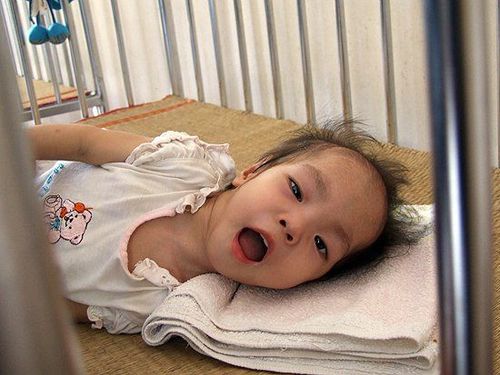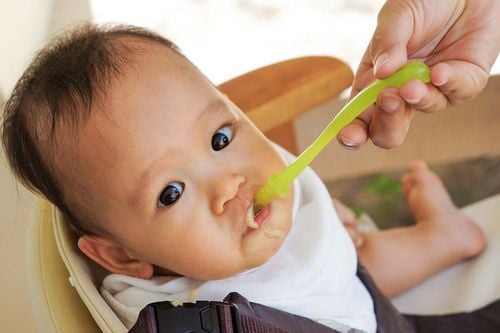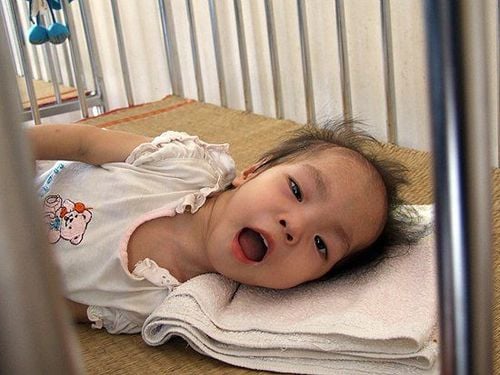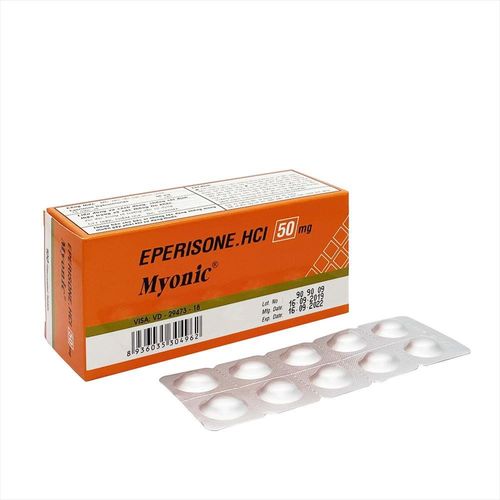This is an automatically translated article.
In Vietnam, there are 1,000 children born, 1.8 children have cerebral palsy, of which boys have a higher rate of cerebral palsy than girls. Whether cerebral palsy is curable is becoming a great concern for many parents.1. Cerebral Palsy and what you need to know
Cerebral palsy or cerebral palsy (Cerebral Palsy) is a condition in which damage from the brain affects the development of motor, language or sensory functions of a child,... The cause of cerebral palsy is one or more The part of the brain that controls movement is damaged, so the patient has difficulty moving the muscles normally.
Cerebral palsy has many different manifestations in each form, because one or more parts of the brain that control movement and language are limited, so people with cerebral palsy cannot move their muscles properly. normal or difficult to speak.
2. Types of cerebral palsy
2.1. Spastic cerebral palsy
Bại não thể co cứng chiếm khoảng 70 – 90% trong tổng số người bị bại não.
2.2. Dyskinetic cerebral palsy The number of people with cerebral palsy is much less than spastic cerebral palsy, only about 20%, however, dyskinesia affects the whole body. all body.
Characteristic of dyskinesia is an abnormal change in muscle tone, sometimes increasing and decreasing, and sometimes uncontrollable movements such as slow and painful movements or fast and jerky movements.
Children with dyskinesia often have difficulty walking or having a normal sitting position. Children with dyskinesia also have difficulty sucking, swallowing, and speaking because the muscles that control facial expressions and the tongue are also affected.
2.3. Ataxic cerebral palsy is the least common form of cerebral palsy, accounting for only about 10%. People with cerebral palsy in ataxia often have an imbalance of posture and coordination of movements, which makes people with cerebral palsy can walk, but their posture is unstable or writing is difficult due to the need for precise coordination between movements. .
3. Is cerebral palsy hereditary?

Yếu tố di truyền có thể gây ra bại não nhưng chưa chứng minh được là nguyên nhân bại não.
Three important factors related to the diagnosis of cerebral palsy are mentioned by scientists from the University of Michigan Health - USA including: genetic factors, congenital cerebral palsy and postpartum cerebral palsy.
Cerebral palsy is not hereditary, however, genetic factors can predispose a child to cerebral palsy. Genetic disorders do not directly cause cerebral palsy in children, but the effects of genetic disorders may have small effects on the genome. The influence of heredity can be complex and cause some abnormalities in the child.
According to scientists, genetics is only one factor that can cause cerebral palsy but has not been proven to cause cerebral palsy. Therefore, families before giving birth or families with children with cerebral palsy who want to have more children should visit a specialist doctor to check the gene map and get the most accurate advice.
4. How long do children with cerebral palsy live?
Cerebral palsy is diagnosed when children are 2 to 3 years old. Nationwide, about 500,000 children over 3 years old and adults have cerebral palsy due to various causes.Cerebral palsy if detected and treated early, children can improve their abilities dramatically. Although the symptoms of cerebral palsy change over time for better or worse, by definition of cerebral palsy, cerebral palsy is not progressive, so if the patient's condition is getting worse and worse, the cause may be It could be due to something other than cerebral palsy.
Many synthetic reports on the life expectancy of people with cerebral palsy are recognized, evaluated and divided by experts into 2 stages: The first stage is embryonic and neonatal life, and the second stage is adulthood .
4.1. Cerebral palsy in the first stage is embryonic and neonatal survival

Khó xác định nguyên nhân tử vong thai nhi ở giai đoạn phôi thai do bại não gây ra.
4.2. Death from cerebral palsy in adulthood
The survival rate of children with cerebral palsy at this stage depends heavily on early intervention from an early age. The severity of disabilities related to cerebral palsy at a young age such as flexibility, increased spasticity, pain, muscle endurance, leading to trauma, stress, etc., has a great influence on on a child's life into adulthood.Statistics from the UK, children with cerebral palsy without severe impairment, up to 99% of children live past the age of 30 and if the child has severe disability, the number drops to 95% of children live past the age of 30.
In addition, reports also show that the life expectancy of children with cerebral palsy will be improved over time with early intervention and rehabilitation.
5. Is cerebral palsy curable?
Cerebral palsy does not mean that the whole brain is damaged, but the brain is only partially damaged and mainly the part of the brain that is damaged is the part of the brain that controls language and movement. Although the damaged part of the brain is unlikely to fully recover, it does not get worse either. The problems caused by cerebral palsy such as movements, posture and other related problems with cerebral palsy can get better or worse depending on the treatment we choose.6. How is cerebral palsy treated?

Vinmec tiến hành ghép tế bào gốc điều trị bại não lần đầu tiên tại Việt Nam.
Treatment of cerebral palsy is not a treatment for 1-2 months, but treatment of cerebral palsy requires a combination of different methods. Treatment of cerebral palsy requires coordination between the family and the treating doctor, a combination of motor rehabilitation for children with motor retardation, speech therapy for children with speech delays or difficulties with language. minus; Sensory conditioning for children with sensory disorders; individual skills training for children with cerebral palsy so that they can adapt to their own disabilities and improve their self-help skills. In addition, it is also necessary to provide integration training for children so that they have the opportunity to interact with society and participate in the trends of life.
Children with cerebral palsy have disabilities in movement and language, so parents need to help children with cerebral palsy develop comprehensively in both behavior, motor, personal - social, psychological skills, language,... Therefore, the family plays a very important role in the treatment of children with cerebral palsy and it is necessary to combine many methods in a process of continuous evaluation of outcomes.
Please dial HOTLINE for more information or register for an appointment HERE. Download MyVinmec app to make appointments faster and to manage your bookings easily.













